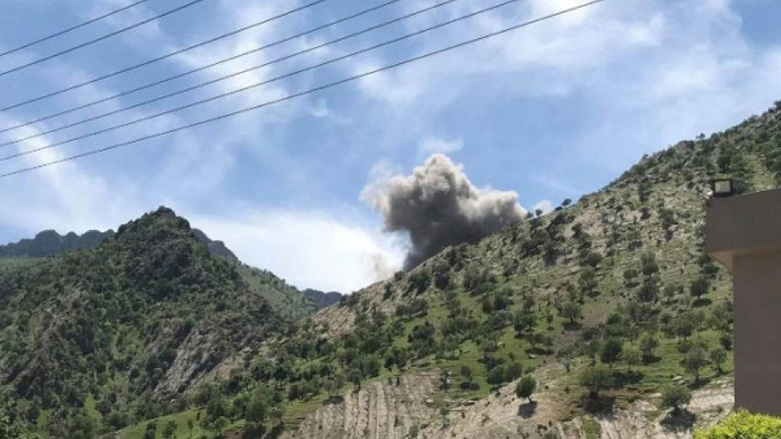Turkish and Iranian military incursions in Iraqi Kurdistan led to spike in wildfires: NGO
“The wildfires have driven people from their homes and villages, while widespread unexploded ordnance often makes firefighting dangerous.”

ERBIL (Kurdistan 24) - Between May and September 2020 nearly 50.000 acres of land were burned during military campaigns by Iran and Turkey in Iraqi Kurdistan, a Dutch peace organization, PAX, said in a report on Thursday.
PAX used satellite images of the burned areas, comparing them with registered military incidents by the Armed Conflict Location & Event Data (ACLED) project.
Turkish military operations against armed groups in Iraq's #Kurdistan resulted in widespread wildfires, impacting people and biodiversity. In our 2nd Environment & Conflict Alert, we've mapped the scale and other related causes. Full report here ⬇️https://t.co/JRjdCQ9Uz7 pic.twitter.com/FaGgQHJ9Zn
— Wim Zwijnenburg (@wammezz) November 13, 2020
The report said that Turkey began a series of airstrikes and ground incursions from June 17, 2020, in Iraqi Kurdistan. “In coordination with Iranian armed forces, about 150 locations—suspected of harboring militants of the Kurdistan Workers Party (PKK)—were targeted,” the report stated
“For weeks, armed drones, jet fighters, helicopters and commandos continued their campaign against the PKK, which has been at war with the Turkish state since 1985. The bombing campaign coincided with the start of the summer season, marked by increasing heat and long, dry periods.”
Photos and video on social media and regular media showed huge wildfires last summer burning through mountainous areas, from Duhok in the northwest to Sulaimani in the east.

“Military incursions by Turkey, supported by Iran in northern Iraq, using air and artillery strikes, have led to a spike in wildfires. As temperatures are rising due to climate change and the summers are getting dryer, the northern parts of Kurdistan have become a dangerous tinderbox that easily sparks,” Wim Zwijnenburg, a senior researcher at PAX told Kurdistan 24 on Friday.
“The wildfires have driven people from their homes and villages, while widespread unexploded ordnance often makes firefighting dangerous. Iraqi Kurdistan’s rich biodiversity is already facing threats from overhunting, pollution, and deforestation, and often these conflict-linked fires burn down protected nature areas, further destroying the precious and unique ecosystems,” he added.
“We urge all parties involved in the conflict to seek peaceful solutions, as the alternative will leave the region literally in ashes.”
According to the report, the location of 32 of the 81 reported incidents overlapped with burned areas recognized from satellite imagery, with a total of 49,568 acres of burned land likely linked to the military campaign. Around 22,659 acres of burned land were in the protected zone.
However, the majority of the wildfires were caused by other causes, including the hot summer temperatures. In total 298.750 acres of burned land were detected in the period May-September 2020, PAX stated.
One incident unrelated to Iranian or Turkish military operations was a massive wildfire on Mount Goizha, located in the Kurdistan Region's Sulaimani province. In October, police arrested two suspects who were accused of causing the wildfire.
In addition, the terrorist organization, ISIS, has previously been accused of burning crop fields in Iraq’s disputed Makhmour.
“There were also other burned areas that may be linked to military operations, but we don't have confirmed data from ACLED,” Zwijnenburg added. “But there are also a lot of burned areas separate from those military operations, possibly caused by cigarettes, coals, and farmers who set farm lands on fire.”
“The 50,000 acres are linked to registered military incidents by ACLED. So out of a total 300,000 acres, 50,000 acres were burned that we could link to military operations. It is possible that there are more fires linked to military operations, but there is no public information on these incidents.”
Editing by Laurie Mylroie